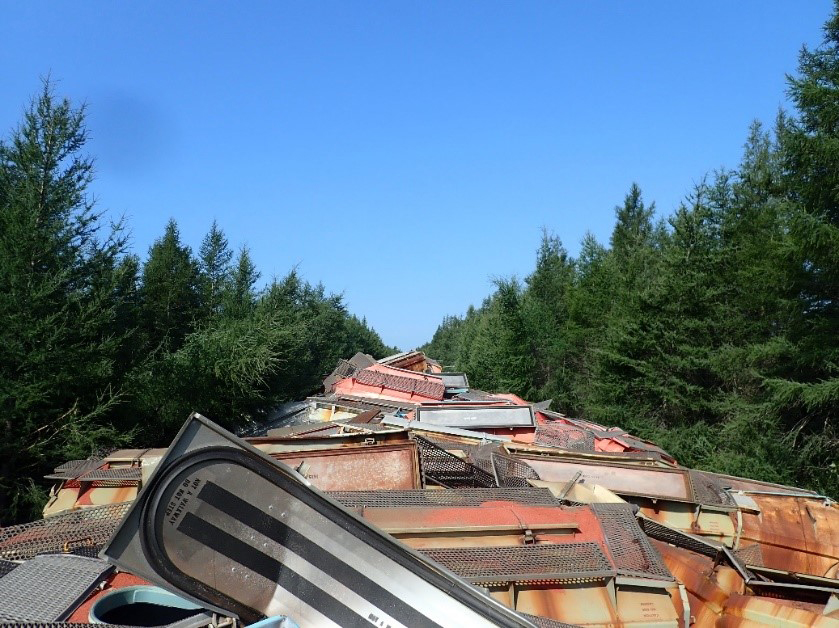
GATINEAU, Quebec — Track that buckled under a train as it was passing — because of “compressive thermal stress” reflecting high temperatures for several days — led to the derailment of a Canadian National train at Pangburn Station, New Brunswick, near Moncton, on Aug. 21, 2021, the Transportation Safety Board of Canada said in an accident report released Thursday, Jan. 5.
Forces from the braking of the train, which was heading downgrade through an area with a permanent slow order, and degraded rail anchoring contributed to the track failure, the TSB said.
The eastbound train involved had two head-end locomotives, 133 carloads of potash, and two distributed-power locomotives at the rear. Thirty cars derailed; no injuries were reported.
Temperatures had reached as high as 31.2 degrees Celcius (88.2 Fahrenheit) in the week prior to the derailment. CN requires hot weather inspections when temperatures reach 30 degrees Celcius; no signs of rail instability or susceptibility to buckling had been reported.
Following the accident, CN issued a bulletin instructing crews to avoid excessive braking and limit dynamic braking through the area where the accident occurred.






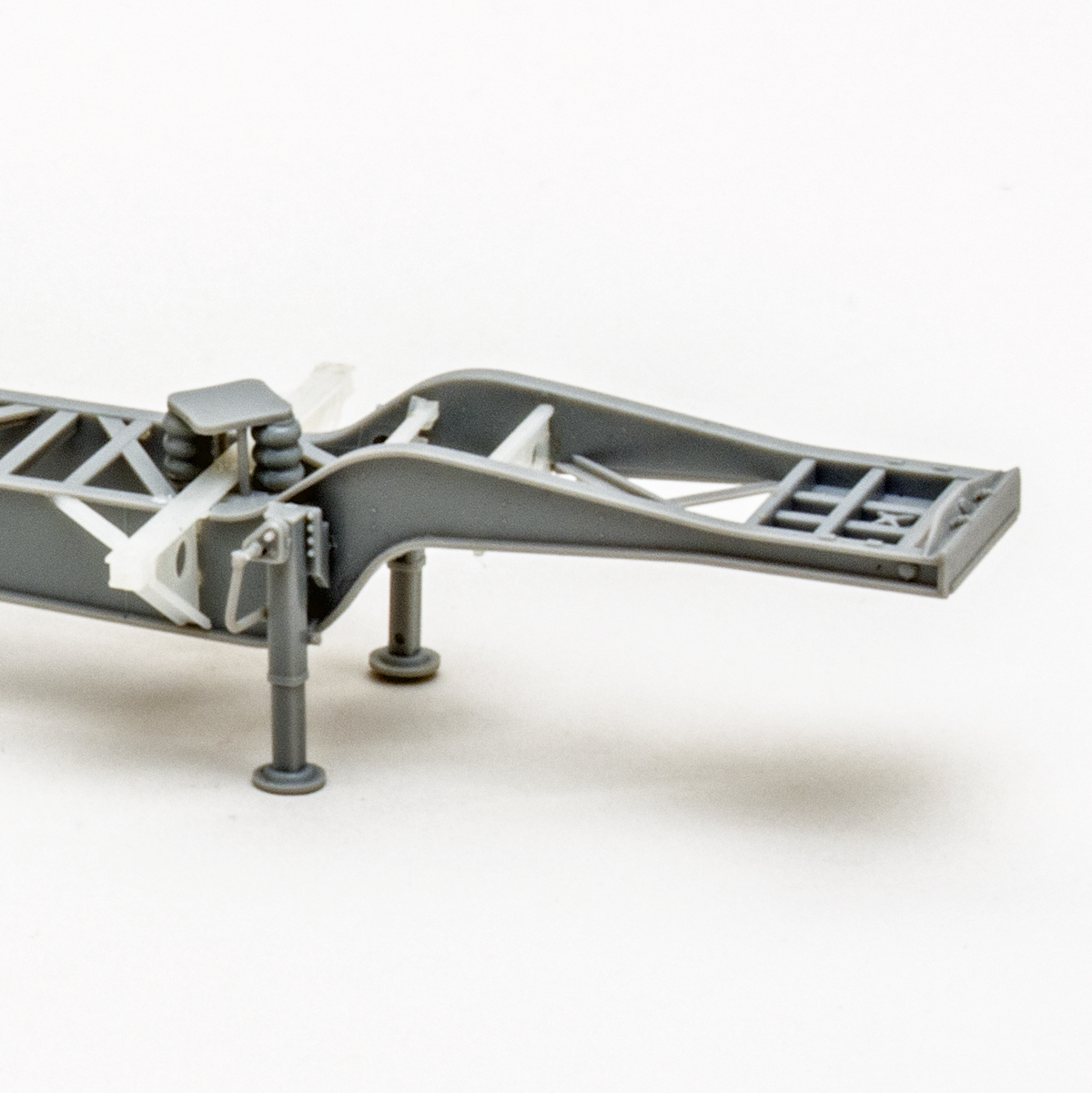
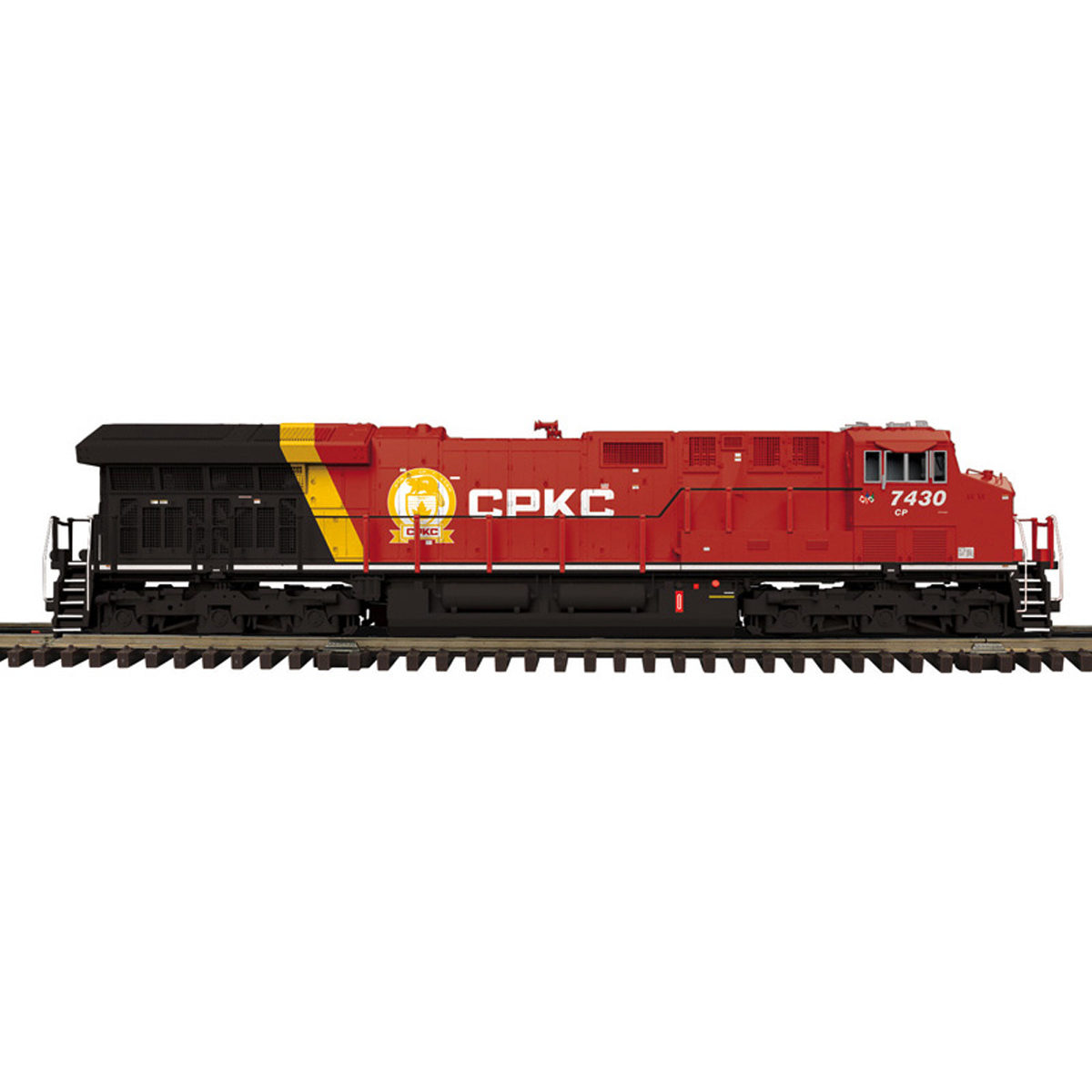
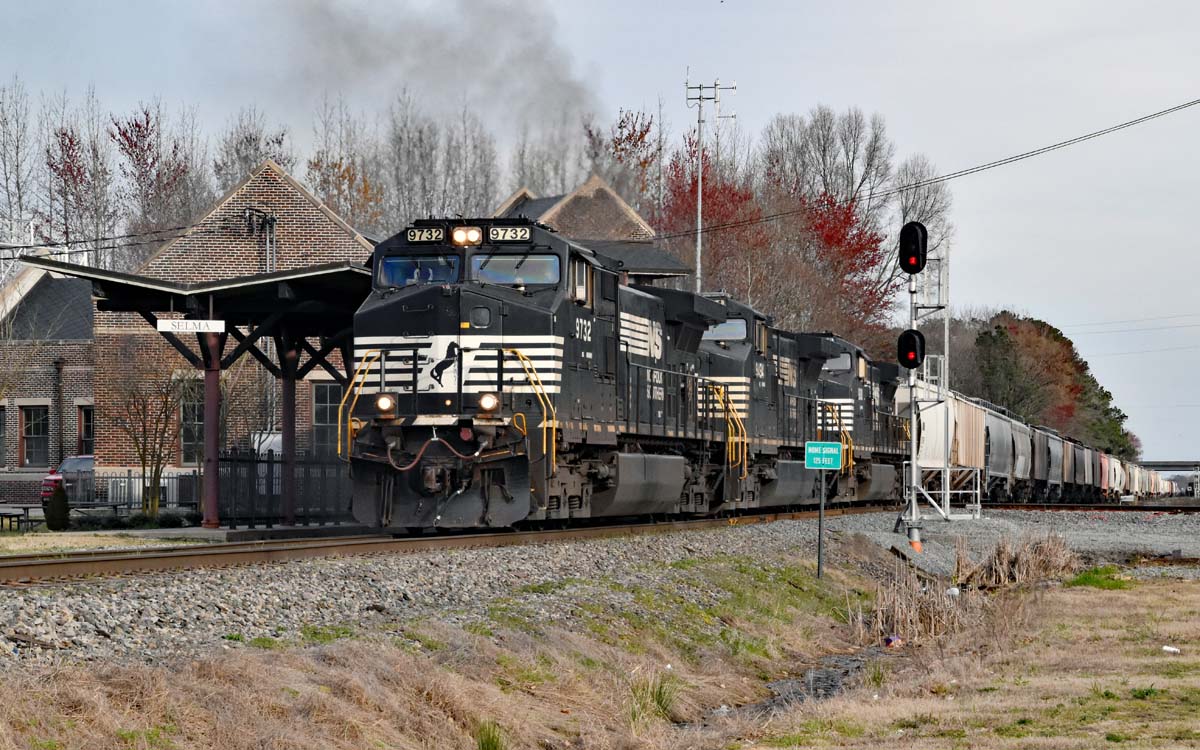
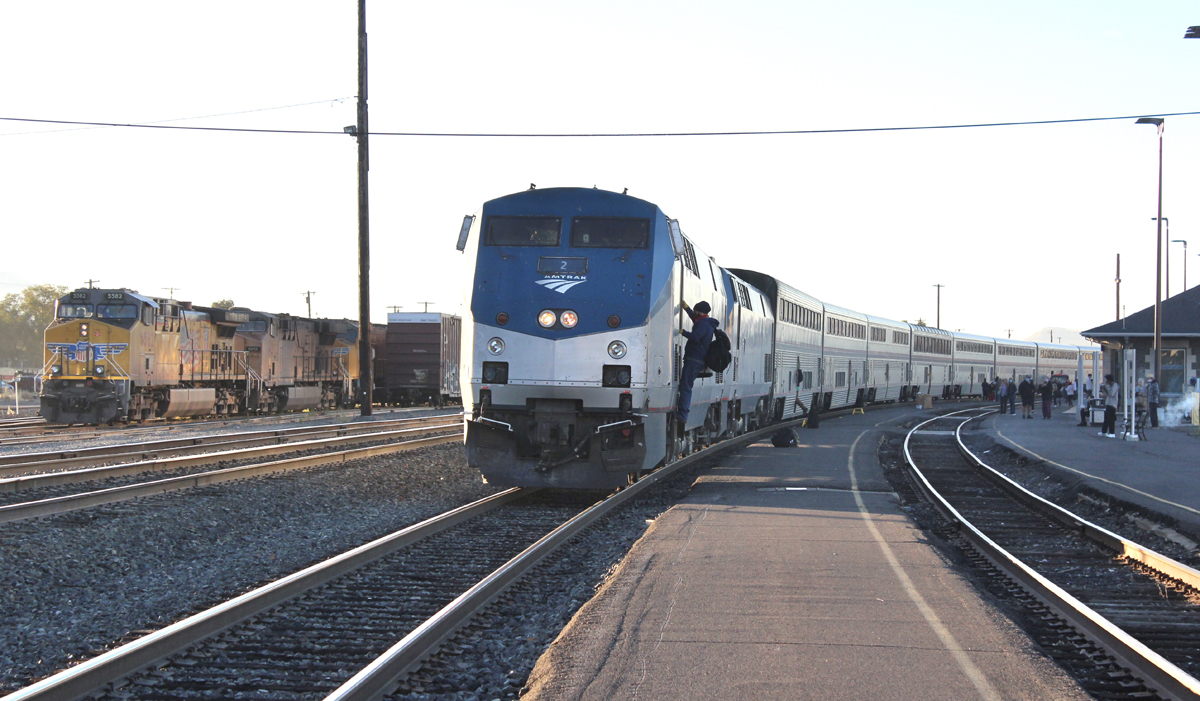




In short: that’s innapropriate train handling. Some trains can handle rough treatment and still stay on the track. A 19000 tons potash train heading downgrade just can’t.
First, TRAINSMAG: remember there is a New Brunswick NJ that sees a lot more rail service than CNR’s line to the Maritimes.
Second, the rail did not stay in place with the braking force of 133 loads. The grade was 0.4% descending. The TSB report shows the engineer made a 7 psi air set, then wound the DB up to 8 (of 8), then eased off a bit. The train was doing 47 mph when it entered the 40 mph zone and had braked down to 39 when it derailed.
Excessive braking????